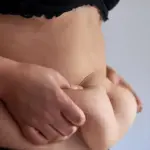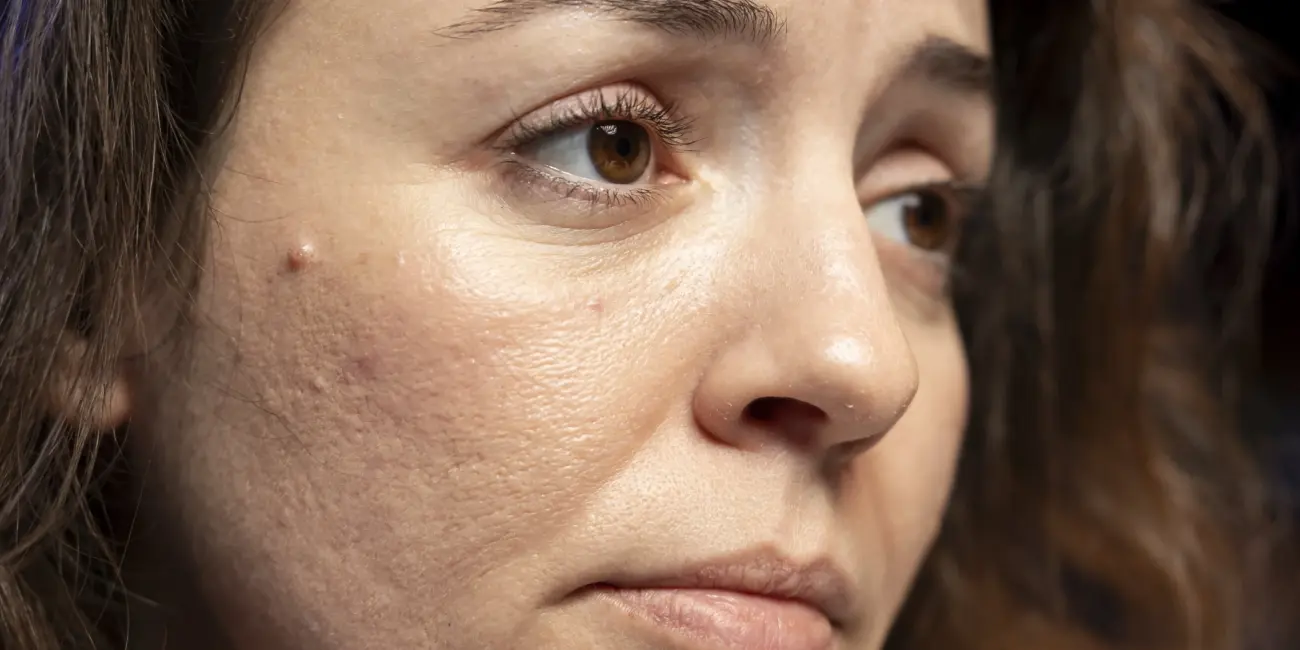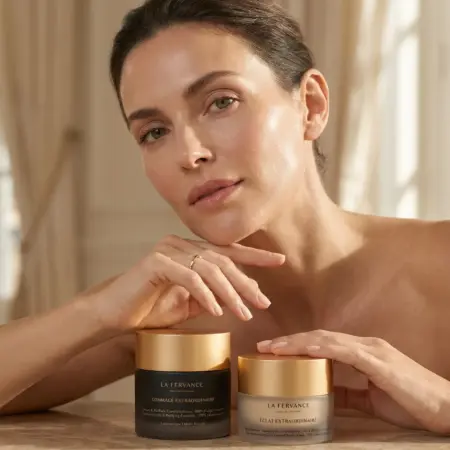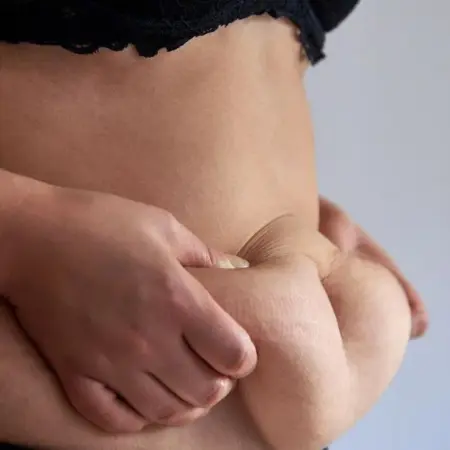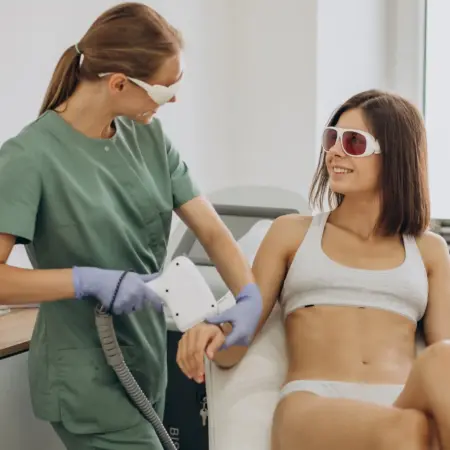Struggling with deep acne scars that won’t fade no matter what you try? Subcision treatment for acne scars is a proven solution for stubborn, indented scars that creams and peels can’t fix alone. In this guide, you’ll discover how Subcision works, what the procedure involves, cost in Delhi, real results from Paradise Wellness, and tips for a smooth recovery.
Table of Contents
What is Subcision Treatment
Subcision treatment is a minor surgical procedure designed to treat deep, depressed acne scars — especially rolling scars that cause skin to look uneven. It works by releasing the fibrous bands under the scar that pull the skin down, allowing it to lift and smooth out naturally.
Key facts about Subcision:
- It’s best for rolling or tethered scars, not raised scars.
- The procedure is done under local anesthesia — you stay awake but feel minimal pain.
- Results improve gradually as new collagen fills the area.
- It’s often combined with other treatments like fillers or lasers for best results.
By breaking the scar tissue beneath the skin, Subcision helps restore a smoother, more even texture, giving you visible improvement in stubborn acne scars.
Causes of Acne Scars & Why Subcision Helps
Acne scars, especially deep rolling scars, form when severe acne damages the deeper layers of your skin. When acne heals, it can leave behind fibrous bands of tissue that tether the top layer of skin down, creating visible depressions.
Key causes of acne scars include:
- Inflammatory acne: Severe cystic acne causes more tissue damage.
- Delayed treatment: Untreated or poorly managed acne increases scarring risk.
- Picking or squeezing pimples: This can damage skin layers and worsen scarring.
- Genetics: Some people are more prone to scarring due to their skin type or healing response.
Subcision works because it targets the root cause — the fibrous bands — by releasing them and allowing the skin to lift. This natural healing response helps build new collagen over time.
Tip: For more on acne scar types, you can read trusted sources like American Academy of Dermatology.
Benefits of Subcision Treatment
Subcision is trusted by dermatologists worldwide because it tackles deep acne scars at the root. Here’s why many patients choose it:
Key benefits:
- ✔ Effective for deep rolling scars: Lifts skin that’s tethered down by scar bands.
- ✔ Visible improvement: Many patients see 30–70% scar depth reduction after multiple sessions.
- ✔ Minimal downtime: It’s a quick in-clinic procedure with short recovery.
- ✔ Long-lasting results: Stimulates new collagen for smoother skin over time.
- ✔ Can be combined: Works well with microneedling, fillers, or lasers for even better results.
Did you know? Studies show Subcision can significantly improve acne scar appearance when combined with fillers or microneedling — making it a gold-standard treatment for deep, stubborn scars.
Best Treatment Options for Acne Scars
When it comes to treating deep acne scars, no single procedure works for everyone. The best results often come from combining treatments tailored to your skin type and scar depth. Here are the top options used at Paradise Wellness:
1. Subcision Treatment
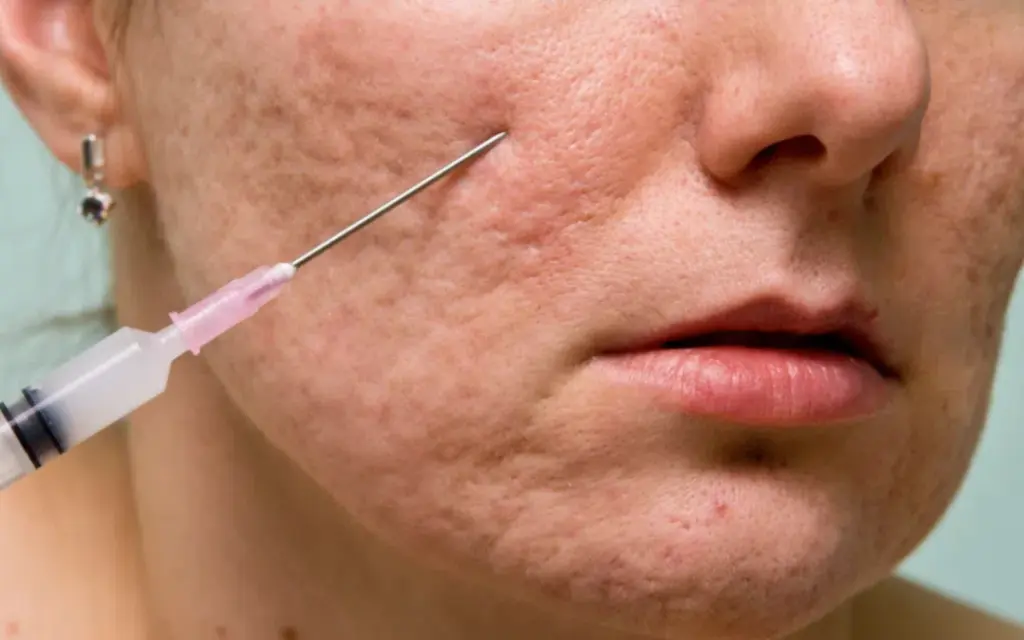
What it is:
Subcision is a minor surgical procedure that breaks the fibrous scar bands under the skin, allowing the scarred area to lift and even out.
How it works:
A fine needle or special blade is inserted under the scar to carefully release the tethered tissue. This stimulates natural collagen production and smoother skin over time.
Who it’s good for:
Best for deep, rolling, or depressed acne scars that cause skin indentations.
2. Microneedling (Derma Roller or RF Microneedling)
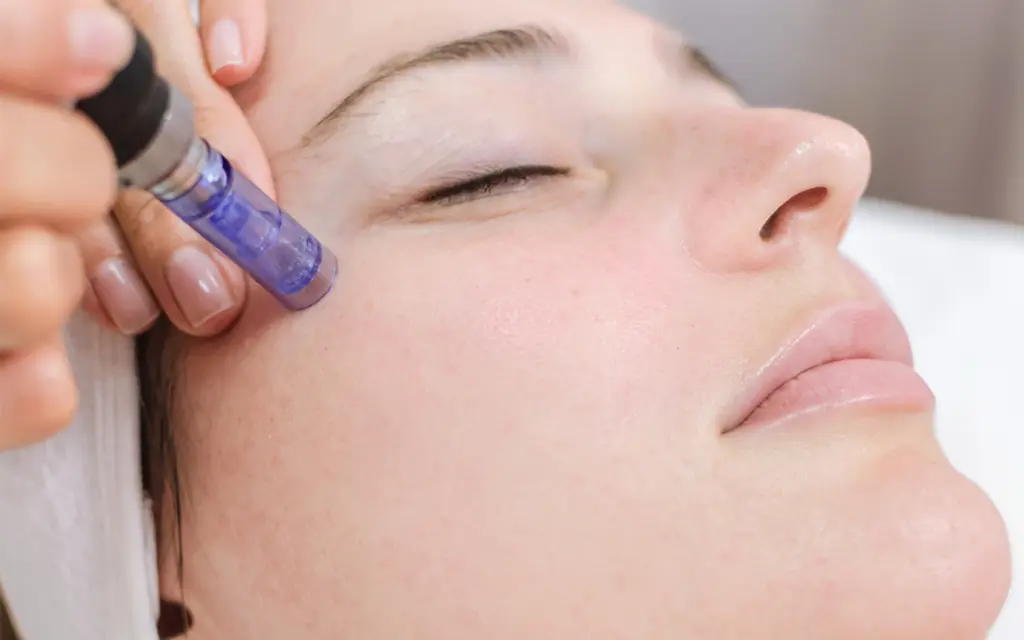
What it is:
Microneedling uses tiny needles to create controlled micro-injuries in the skin, triggering new collagen production.
How it works:
As the skin heals, new collagen fills in scarred areas, improving texture and tone.
Who it’s good for:
Great for mild to moderate acne scars, skin texture, large pores, and fine lines. Often combined with Subcision for deeper scars.
3. Fractional CO2 Laser
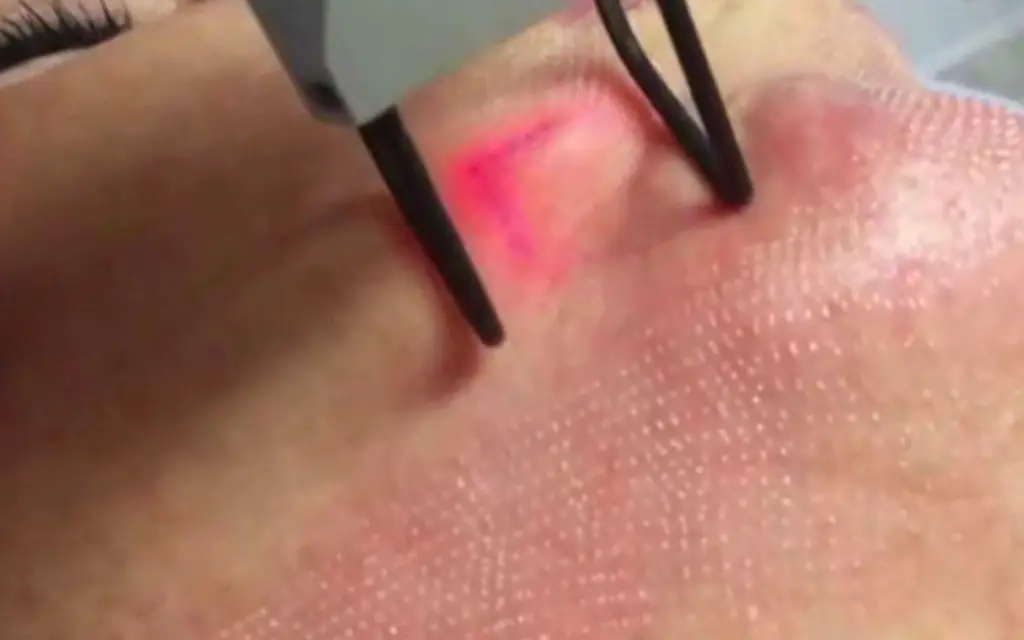
What it is:
A fractional CO2 laser resurfaces the skin by removing damaged outer layers and stimulating collagen.
How it works:
It targets both the epidermis and deeper dermis, improving scars, pigmentation, and skin texture.
Who it’s good for:
Ideal for mixed acne scars, ice-pick scars, and overall skin rejuvenation. Often combined with Subcision for best results.
4. Dermal Fillers
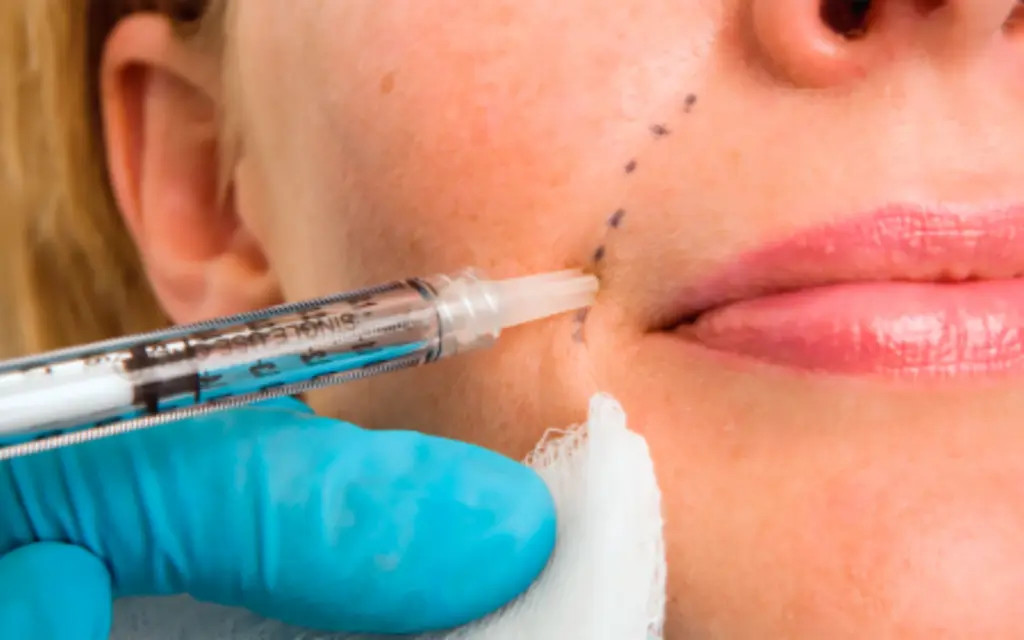
What it is:
Fillers like hyaluronic acid are injected to lift sunken acne scars from beneath.
How it works:
They provide instant volume and smoothness, often used right after Subcision to maintain lift while healing.
Who it’s good for:
Best for deep rolling scars or atrophic scars that benefit from added volume.
At Paradise Wellness, our doctors often combine Subcision with these treatments for faster, longer-lasting results tailored to your skin’s needs.
Differences Between Acne Scar Treatment
Each treatment option works in a unique way and suits different scar types. Here’s a quick comparison to help you decide what might be best for you:
| Feature | Subcision Treatment | Microneedling (RF) | Fractional CO2 Laser | Dermal Fillers |
|---|---|---|---|---|
| Best for | Deep rolling scars | Mild/moderate scars, texture | Mixed scars, texture, pigmentation | Volume loss, deep indents |
| How it works | Breaks scar bands under skin | Creates micro-injuries to boost collagen | Removes damaged layers & resurfaces skin | Fills sunken scars from below |
| Cost (per session) | ₹15,000–₹25,000 approx. | ₹8,000–₹12,000 approx. | ₹8,000–₹20,000 approx. | ₹18,000–₹25,000 approx. |
| Sessions needed | 1–3 | 3–6 | 1–3 | 1–2 |
| Downtime | 2–7 days (mild swelling) | 1–2 days (redness) | 5–7 days (peeling, redness) | None or mild swelling |
| Results duration | Long-term, permanent improvement | Builds up over time | Long-term improvement | Temporary (6–12 months) |
| Pain level | Mild (numbing used) | Mild discomfort | Mild-moderate (numbing used) | Minimal |
| Combination benefit | Often combined with fillers or laser | Often combined with Subcision | Often combined with Subcision | Often used after Subcision |
Choosing the right treatment or combination depends on your scar type, skin condition, and desired results — our dermatologists at Paradise Wellness can guide you with a customized plan.
Risks or Side Effects of Subcision Treatment
Like any cosmetic procedure, Subcision treatment for acne scars comes with some possible risks and side effects — though they’re generally mild and temporary when done by an experienced dermatologist.
Common side effects include:
- Swelling & bruising: Mild swelling or bruising is normal for 5–7 days.
- Mild pain or tenderness: Some discomfort at the treated area is common.
- Temporary redness: The skin may look red or slightly inflamed.
- Minor bleeding: Tiny entry points may ooze a little right after the procedure.
- Rare risk of infection: Very uncommon if proper hygiene is maintained.
How to minimise risks:
- Always choose a qualified dermatologist or cosmetic doctor.
- Follow all aftercare instructions (like avoiding makeup for 24–48 hours).
- Keep the treated area clean and moisturised.
- Avoid harsh treatments or exfoliation until fully healed.
- Attend follow-up appointments if needed.
At Paradise Wellness, all Subcision procedures are performed by trained experts using strict medical protocols — so you get safe, natural-looking results with minimal downtime.
Before & After Subcision Treatment for Acne Scars
Seeing real results can help you understand what to expect. Subcision treatment delivers visible improvement in deep acne scars — lifting the skin and creating a smoother, more even texture over time.
Below are real before-and-after images from our clients at Paradise Wellness:
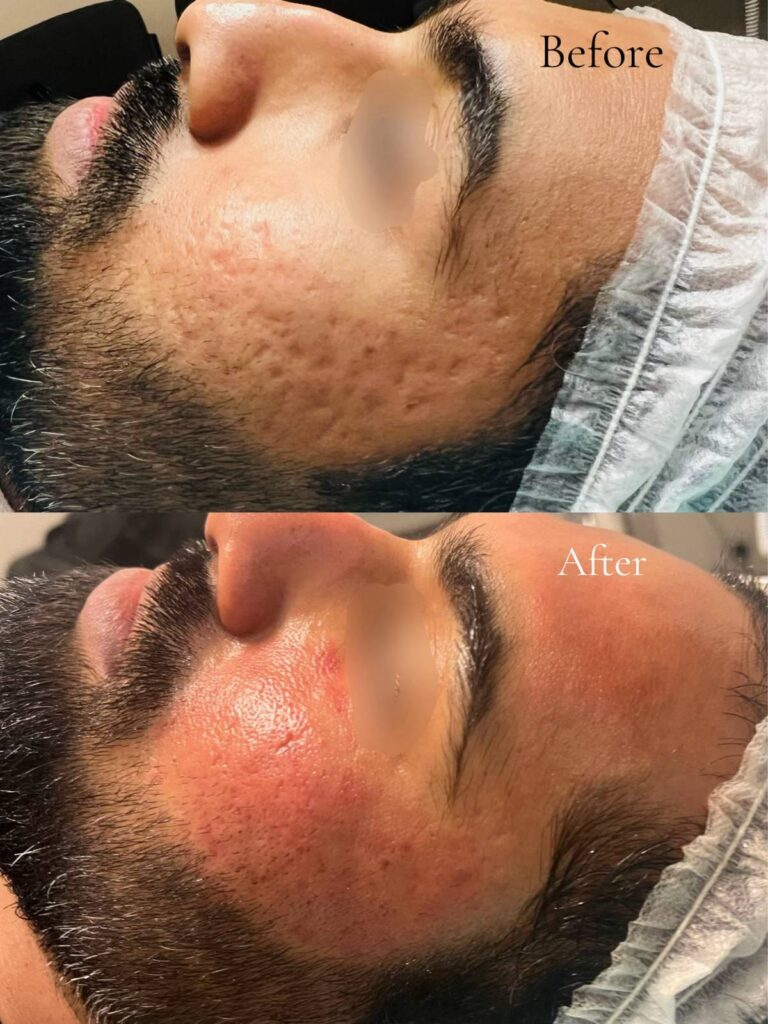
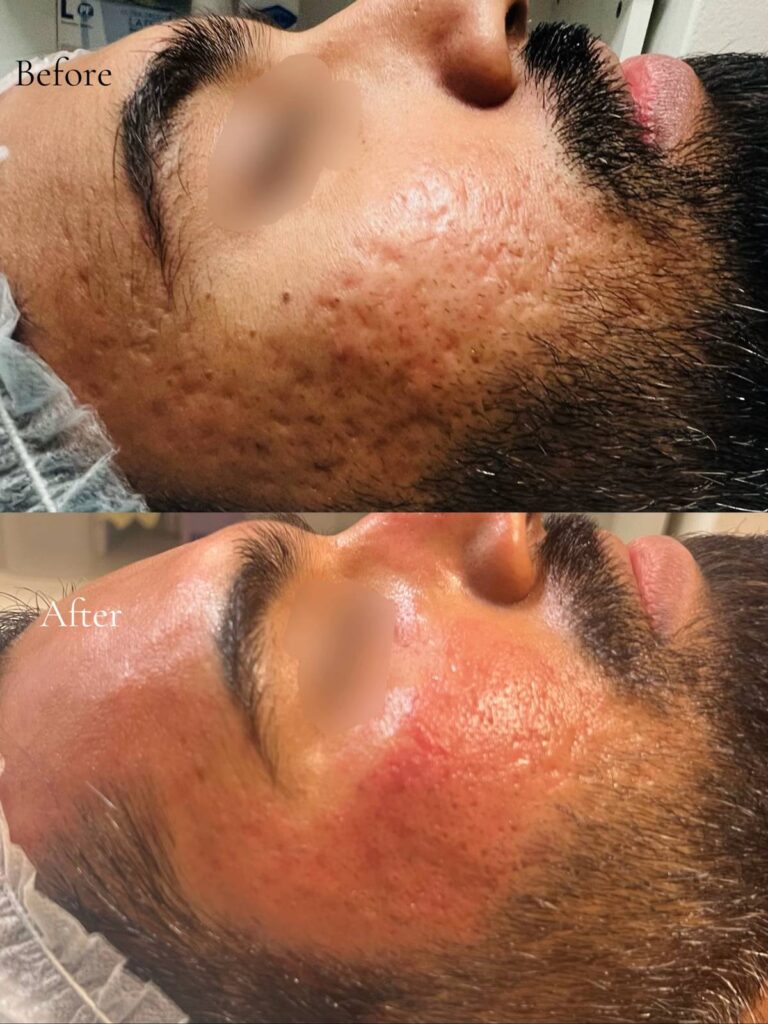
Tips for this section:
- Use at least 2–3 real case studies if possible.
- Mention the time gap — “Results shown 2 months after one Subcision session.”
- Add a short testimonial quote under the image if you have consent.
- Keep file sizes optimised for faster loading.
Every client’s results vary — but with a customised plan, you can expect a noticeable reduction in deep acne scars and improved skin texture.
FAQs about Subcision Treatment for Acne Scars
Is Subcision Treatment safe?
Yes! Subcision is considered safe when performed by a qualified dermatologist. It’s a minor, in-clinic procedure with minimal risks and a quick recovery if aftercare instructions are followed properly.
How long do Subcision results last?
The improvement from Subcision is long-lasting because it stimulates natural collagen production and breaks down scar bands permanently. Some patients may need multiple sessions for the best results.
How many Subcision sessions will I need?
It depends on your scar depth and skin type. Most people see good results with 1–3 sessions, spaced a few weeks apart. Your dermatologist will recommend a personalised plan.
Does Subcision Treatment hurt?
Discomfort is minimal. The procedure is done under local anesthesia, so you may feel slight pressure but not pain. Mild swelling or bruising afterward is normal and temporary.
Can I combine Subcision with other acne scar treatments?
Absolutely. Combining Subcision with fillers, microneedling, or laser treatments often gives faster and better results, especially for deep or mixed scars.
Still have questions? Our team at Paradise Wellness is here to guide you — just give us a call!
Conclusion
Subcision treatment is a proven, safe, and effective way to tackle deep acne scars that creams and peels alone can’t fix. By targeting the root cause — the scar bands under your skin — Subcision lifts and smooths your skin naturally, restoring your confidence.
At Paradise Wellness, you’re in trusted hands. Our experienced dermatologists use advanced techniques and a personalised approach to help you achieve visible, long-lasting results with minimal downtime.
Ready to experience Subcision Treatment with experts? Book your free consultation at Paradise Wellness today!
Call +91 97738 63777 or visit us at Vasant Vihar, Pitampura, or Civil Lines, Delhi.


